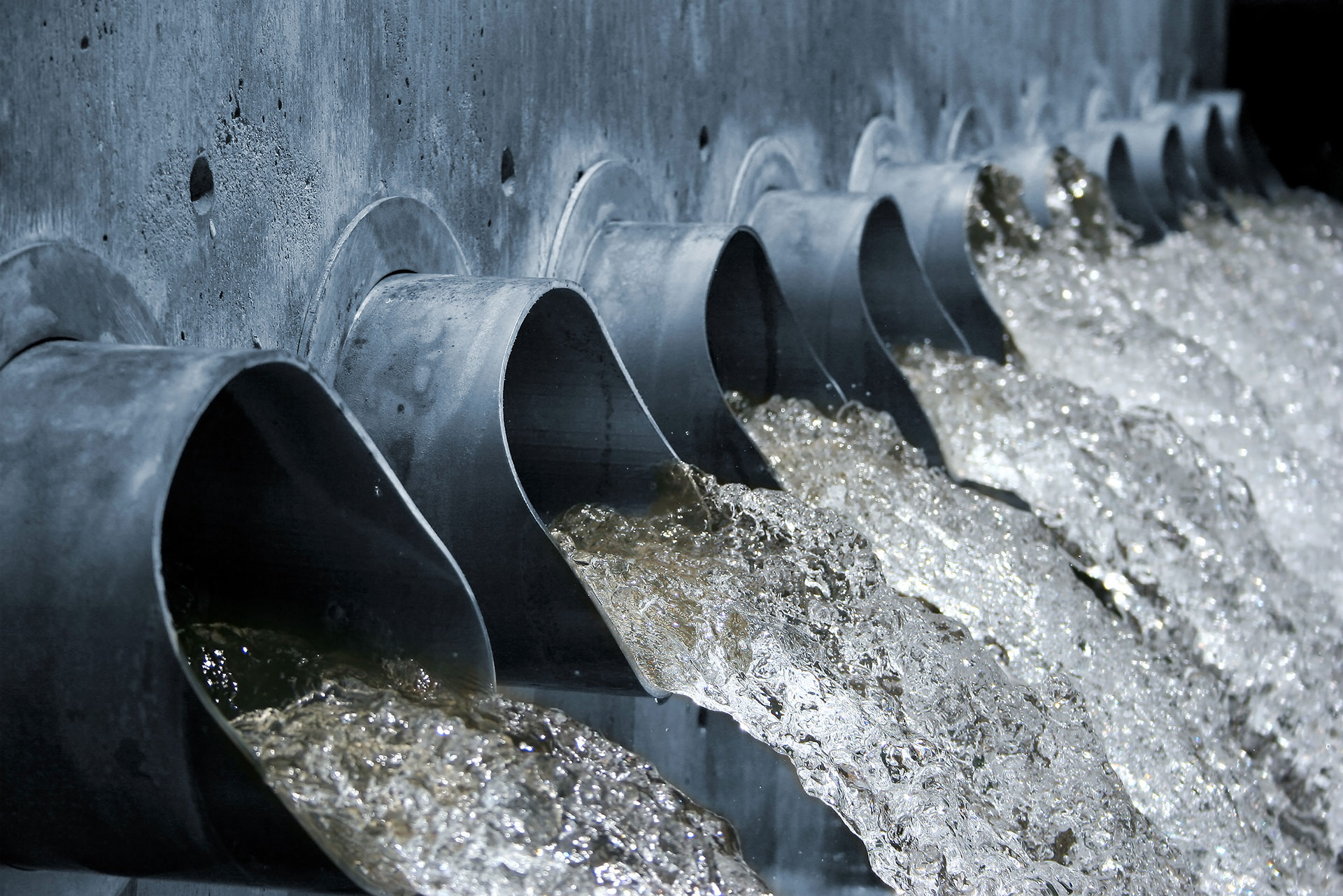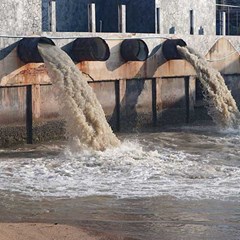Industrial Waste Water Treatment-- Cutting-Edge Technologies for Water Purification
Trick Techniques in Hazardous Waste Water Treatment Procedures
The therapy of industrial wastewater is an essential aspect of ecological management, entailing a range of strategies created to mitigate the influence of impurities. Innovations in technologies such as membrane purification and advanced oxidation processes use cutting-edge options for boosting therapy efficacy.
Physical Treatment Techniques
Just how efficiently can physical therapy methods deal with the intricacies of industrial wastewater? Physical treatment approaches play a pivotal role in the preliminary phases of wastewater administration, concentrating mostly on the removal of solids and big particulates. Strategies such as sedimentation, filtration, and flotation are vital for decreasing the concentration of put on hold solids, therefore boosting the performance of subsequent treatment procedures.
Sedimentation includes the gravitational settling of solids, permitting for the separation of much heavier materials from the wastewater. This method is particularly efficient in clearing up water prior to chemical or organic treatments.
Furthermore, flotation techniques, which use air bubbles to raise put on hold solids to the surface for elimination, work in dealing with wastewater with high focus of fats, oils, and oils. Overall, physical therapy techniques offer as a critical very first step in the detailed monitoring of commercial wastewater, making certain that the load on subsequent therapy phases is decreased and improving total treatment efficacy.
Chemical Treatment Strategies
While physical treatment approaches prepared for efficient wastewater monitoring, chemical treatment methods are crucial for resolving the extra intricate contaminants frequently discovered in industrial effluents. These techniques utilize various chemical agents to speed up, reduce the effects of, or oxidize unsafe materials, ensuring a much more thorough elimination of toxins.
One typical approach is coagulation and flocculation, where chemical coagulants such as light weight aluminum sulfate or ferric chloride are included in promote the aggregation of put on hold fragments. This process enhances solid-liquid splitting up, lowering turbidity and improving water high quality. In addition, neutralization processes are utilized to readjust the pH of wastewater, making use of acids or bases to neutralize acidic or alkaline streams, respectively.
Oxidation-reduction reactions play a crucial duty in degrading natural contaminants and pathogens. Chemical oxidants like chlorine, ozone, or hydrogen peroxide are utilized to damage down complex organic substances, making them less unsafe or a lot more naturally degradable. In addition, advanced oxidation procedures (AOPs) integrate numerous oxidation techniques to improve toxin removal performance.
Organic Treatment Procedures
The efficiency of wastewater therapy is dramatically boosted by organic therapy processes, which harness the all-natural metabolic tasks of bacteria to disintegrate raw material and eliminate pollutants. Industrial Waste Water Treatment. These processes primarily include anaerobic and aerobic digestion, each tailored for details kinds of wastewater
Cardiovascular treatment procedures make use of oxygen to sustain microbial development, promoting the breakdown of natural pollutants right into carbon dioxide and water. Common approaches include activated sludge systems, where aeration storage tanks assist in the blending of wastewater with microorganisms, and trickling filters, which motivate biofilm development on media surfaces.
Alternatively, anaerobic therapy procedures take place in the absence of oxygen, using anaerobic microorganisms to break down natural issue, causing biogas manufacturing, a renewable resource resource. Anaerobic digesters are commonly used in industrial setups for this purpose, successfully lowering the quantity of sludge while producing important biogas.
The option of a biological therapy technique depends on wastewater attributes, treatment goals, and regulatory criteria. The combination of biological procedures in wastewater treatment not only boosts pollutant elimination performance however likewise advertises sustainability by reducing chemical use and sustaining resource recuperation.
Advanced Oxidation Processes

Common AOP methods include Fenton's ozonation, photocatalysis, and reagent. Fenton's reagent, a combination of hydrogen peroxide and ferrous iron, catalyzes the formation of hydroxyl radicals, making it reliable for treating wastewater having phenolic compounds and various other stubborn substances. Ozonation utilizes ozone as an effective oxidant, with the ability of breaking down a vast range of natural contaminants while at the same time decontaminating the effluent. Photocatalysis utilizes light-activated stimulants, such as titanium dioxide, to improve oxidation responses and remove impurities.
AOPs offer a number of advantages, including lowered sludge manufacturing and the capacity to deal with wastewater with high focus of natural contaminants. The implementation of AOPs needs mindful factor to consider of operational criteria and cost-effectiveness, making certain that these advanced strategies are appropriately incorporated right into existing wastewater therapy systems.
Membrane Layer Purification Technologies

Microfiltration is effective for getting rid of put on hold solids and microorganisms, while ultrafiltration targets smaller sized natural particles and viruses. Nanofiltration connects the space in between ultrafiltration and reverse osmosis, efficiently getting rid of natural substances and divalent ions. Reverse osmosis offers the highest degree of purification, used mostly for desalination and removing mono-valent ions.
Membrane layer modern technologies use countless benefits, consisting of low energy intake link compared to typical therapy approaches, modular style for scalability, and the capacity for water recovery and reuse. Difficulties such as membrane fouling and the need for normal maintenance need to be dealt with to make certain system effectiveness. In general, membrane filtration modern technologies stand for a vital element of modern commercial wastewater therapy strategies, advertising sustainability and source conservation in water monitoring.
Final Thought
To conclude, industrial wastewater therapy utilizes a varied selection of strategies, consisting of physical, chemical, biological, and progressed techniques. Each method plays an essential function in efficiently dealing with numerous pollutants, boosting water quality, and promoting source sustainability. The integration of these strategies cultivates a thorough treatment approach, making certain that industrial effluents meet regulative standards while reducing ecological impact. Continued advancements in these methods will certainly better boost the performance and effectiveness of wastewater therapy procedures in industrial setups.
The treatment of commercial wastewater is an essential aspect of environmental administration, including an array of strategies designed to reduce the impact of contaminants.Exactly how efficiently can physical treatment approaches address the intricacies of commercial wastewater?Advanced oxidation procedures (AOPs) stand for a cutting-edge method in industrial wastewater therapy, made to properly deteriorate organic toxins that are frequently resistant to traditional treatment techniques (Industrial Waste Water Treatment).In final thought, industrial wastewater therapy employs a diverse variety of techniques, including physical, chemical, organic, and advanced methods. Proceeded innovations in these methodologies will additionally improve the performance and effectiveness of wastewater therapy processes in industrial setups